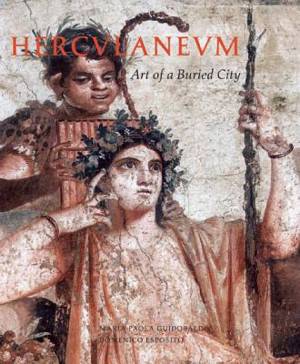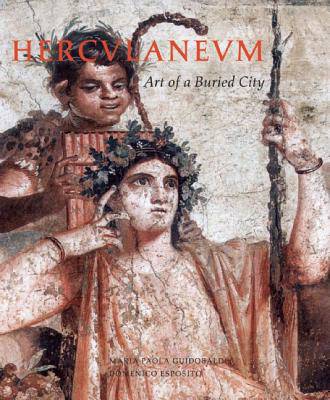
- Afhalen na 1 uur in een winkel met voorraad
- Gratis thuislevering in België vanaf € 30
- Ruim aanbod met 7 miljoen producten
- Afhalen na 1 uur in een winkel met voorraad
- Gratis thuislevering in België vanaf € 30
- Ruim aanbod met 7 miljoen producten
Zoeken
Herculaneum
Art of a Buried City
Maria Paola Guidobaldi, Domenico Esposito, Luciano Pedicini
Hardcover | Engels
€ 131,95
+ 263 punten
Omschrijving
Herculaneum, located on the picturesque Bay of Naples, was buried in the same volcanic eruption as its larger neighbor, Pompeii. But while Pompeii was covered by a relatively shallow layer of loose volcanic ash, Herculaneum was submerged in deep flows of hot volcanic mud, which preserved the upper stories of buildings, as well as organic materials like wooden furnishings and foodstuffs.
This oversized volume opens with an account of the city's catastrophic destruction in AD 79, and of the excavations, underway since 1738, that have brought at least a part of its treasures back to light. It then surveys the principal public buildings and private residences that have been uncovered, including the famous Villa of the Papyri, perched to the northwest of the town.
The splendid decoration of these ancient structures--in particular, their wall paintings--is presented as never before, thanks to an extensive photographic campaign carried out especially for this book. With these superb illustrations complementing an authoritative text, Herculaneum is sure to be welcomed by all students and enthusiasts of archaeology.
This oversized volume opens with an account of the city's catastrophic destruction in AD 79, and of the excavations, underway since 1738, that have brought at least a part of its treasures back to light. It then surveys the principal public buildings and private residences that have been uncovered, including the famous Villa of the Papyri, perched to the northwest of the town.
The splendid decoration of these ancient structures--in particular, their wall paintings--is presented as never before, thanks to an extensive photographic campaign carried out especially for this book. With these superb illustrations complementing an authoritative text, Herculaneum is sure to be welcomed by all students and enthusiasts of archaeology.
Specificaties
Betrokkenen
- Auteur(s):
- Uitgeverij:
Inhoud
- Aantal bladzijden:
- 352
- Taal:
- Engels
Eigenschappen
- Productcode (EAN):
- 9780789211460
- Verschijningsdatum:
- 3/12/2013
- Uitvoering:
- Hardcover
- Formaat:
- Genaaid
- Afmetingen:
- 279 mm x 333 mm
- Gewicht:
- 3129 g

Alleen bij Standaard Boekhandel
+ 263 punten op je klantenkaart van Standaard Boekhandel
Beoordelingen
We publiceren alleen reviews die voldoen aan de voorwaarden voor reviews. Bekijk onze voorwaarden voor reviews.








